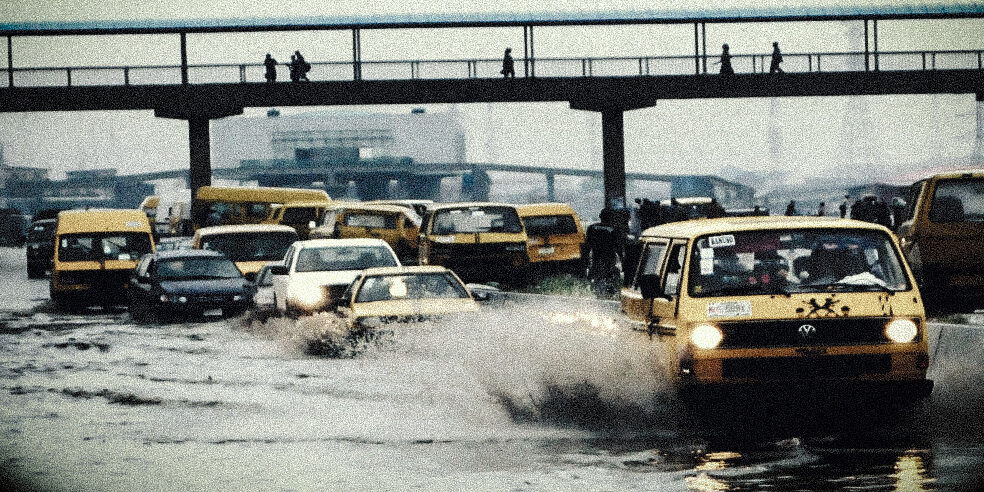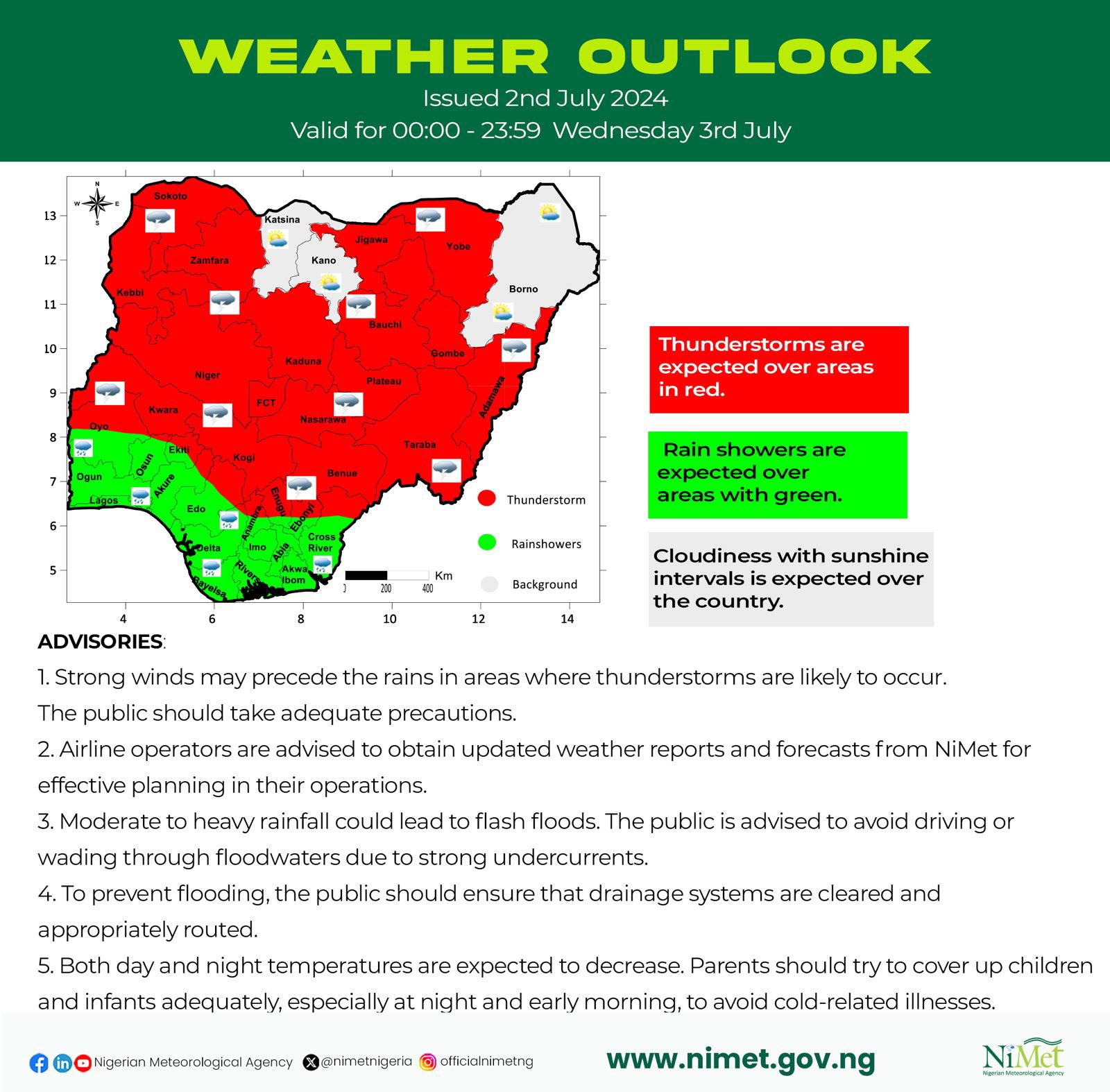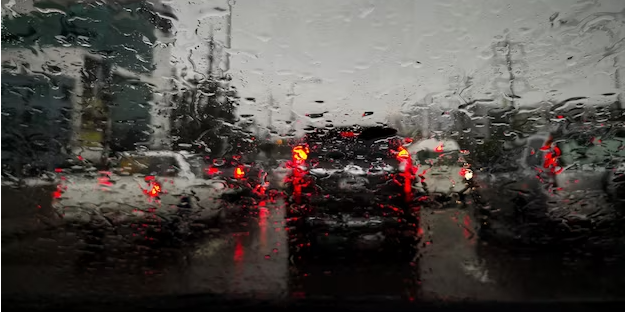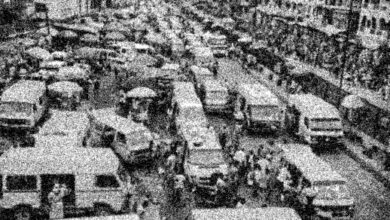Rainy Wednesday exposes the ugliness of living in upscale Lagos
Marking a remarkably stressful Wednesday morning on the mainland side of Lagos, people were shown in videos that captured them needing to pay up to ₦200 to be transported manually across flooded terrain.

Residents have known it for several years, what an inopportunity it is for them when it rains in low-lying Lagos and very early this morning, they were reminded by substantial flooding entering into the Lagos Island and the extremely luxurious Eti-Osa axis adjoining it.
Although most people are probably currently stuck at home or taking cover as the rain poured out alongside strong winds from 5am on Wednesday, 3 July, the word still got out about living spaces being covered up by water just like it was witnessed in Lekki, a real estate haven.

Every year, despite the traumas of flooded apartments, renters and liquid investors gather there to take their pick of the luxury and access to services. Once again, today, as the rain batters rooftops non-stop, there has been the spotlighting of a common problem of flooding when it rains in waterfront communities threatened by sea-level rise (SLR) misfortune.
ALSO READ: Do you wonder about the excessive rain keeping Harmattan away?
Reacting to the latest surge of water into residential buildings, Maduba Augustine on X wrote: This flooding is going to reactivate the cholera. Weaken House foundations for more building collapse. Damage [a lot] of vehicles and properties. Poor Lagos.
A United Nations Intergovernmental Panel for Climate Change (IPCC) report has listed Lagos alongside Port Novo as two West African cities that ought to strengthen their coastal defence to avoid the worst possible with SLR.
Earlier efforts in Lagos, beginning in 2003 brought on the Great Wall of Lagos which is an 8.5 km-long structure built out of 100,000 concrete blocks and rises six meters above sea level. This was meant to protect mostly the Victoria Island axis but also Lekki from the early 21st Century coastal erosion that the administration of Bola Tinubu as the governor couldn’t let continue.
Building the Great Wall was supposed to inspire real estate confidence in the area and it did at a time, but in recent years, Lekki in particular has been feeling unprotected and loose.
Lekki Garden Estate. What could possibly be the solution to this yearly flooding?, Adeyinka Adeife asks in a tweet. Other residents going through the pain of a flooded city have been sending out advisories to anyone still in their homes. It has been recommended that they stay put until the roads clear off.
Lekki garden estate 🥹
What could possibly be the solution to this yearly flooding?
— Passenger (@adeyinka_adeife) July 3, 2024
Probably slugging it out on a clogged highway, Tunde Arewa feeling frustrated shared that: Anytime rain falls this heavy, we are reminded that Lagos is not working! Our road networks and drainage system [leave] so much to be desired. If you have plans of going anywhere today, please ditch it!
But Lagosians would rather ditch flood in their city entirely. Their state’s officials think it is a two-way street before there can be limited flooding. On their part, they spend money to clear the drainage system, mostly the gutters, but dirt ends up making it back there and then a cycle is repeated.
ALSO READ: How far can $75m go towards building Nigeria’s climate change resilience?
Marking a remarkably stressful Wednesday morning on the mainland side of Lagos, people were shown in videos that captured them needing to pay up to ₦200 to be transported manually across flooded terrain.
This scenario, which played out around the Oshodi bus terminal pictured workers and desperate travellers on the backs of someone willing to convey them to a dry spot. From there, they can continue the rest of the journey to their destinations.

With the Wet Season still building momentum, this service of lifting people through flooded crossings while pinned to the back will stick for a while.
A warning from the Minister of Water Resources and Sanitation, Prof Joseph Utsev briefing journalists on the 2024 Annual Flood Outlook for the country back in April makes this a possibility. Alongside 13 other southern Nigeria states, Lagos was considered high-risk and the level of floods in this category is expected to be high in terms of impact on the population, agriculture, livelihoods, livestock and infrastructure, and the environment.

Ayodelé is a Lagos-based journalist and the Content and Editorial Coordinator at Meiza. All around the megacity, I am steering diverse lifestyle magazine audiences with ingenious hacks and insights that spur fast, informed decisions in their busy lives.






